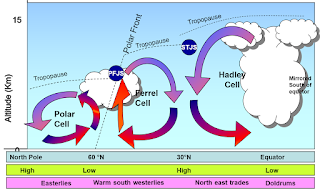Year 11 Revision November/December 2016

Above is a summary of all the topics from unit 1. Below are some questions you may want to look at with some worked answers. Past papers can be found here . Note there is unit 1, 2 and 3 papers here. In the mocks you will be doing a unit 3 and a unit 1 paper. Have a go at some of the questions from the link above. Bring them in to class so your teacher can have a look at them. ASK QUESTIONS! Useful Videos from Edexcel. YOU DO NOT NEED THE COASTS CLIP THOUGH You will also find fact tests on the school website Qu. Explain how subduction zones generate both earthquakes and volcanoes. [6] • At a subduction zone a dense ocean plate is pushed down into the mantle. • Friction between the subducting plate and the plate above causes the plate to ‘stick’. • Pressure builds up. • Eventually the pressure is too much and the plate ‘snaps’ apart. • The energy releases causes an earthquake. • As the plate sinks it is heated. • Some material melts and rises as
